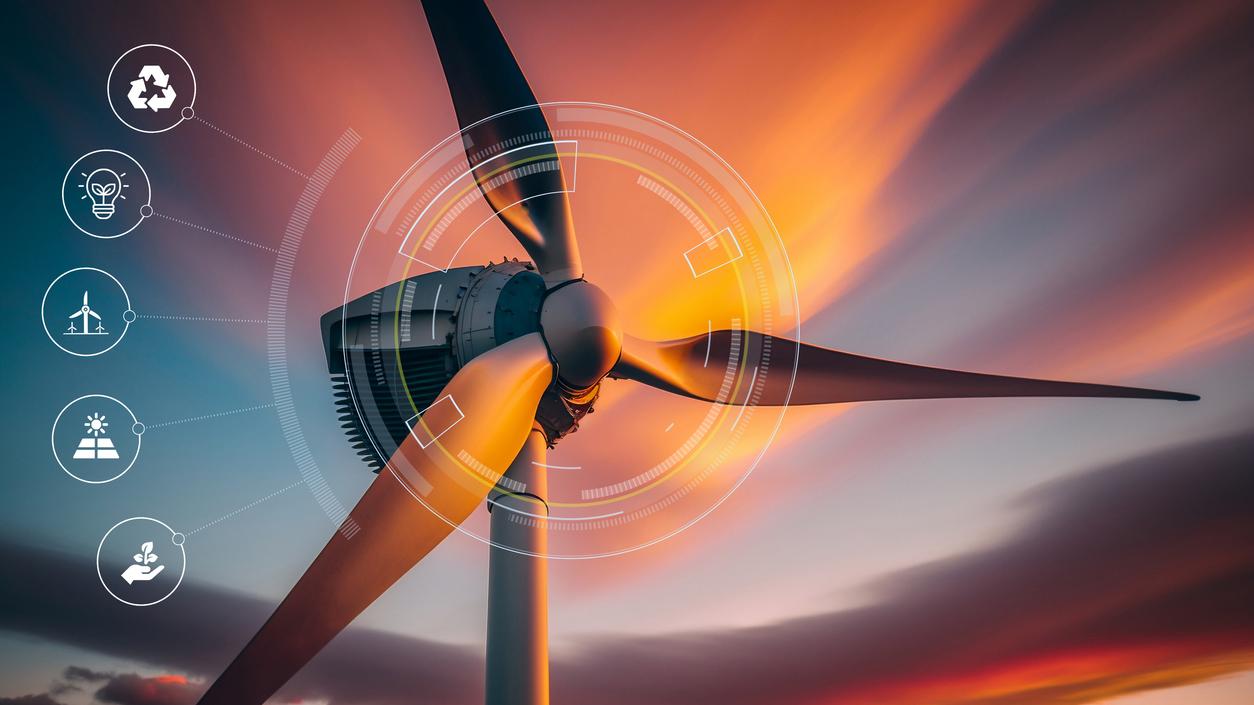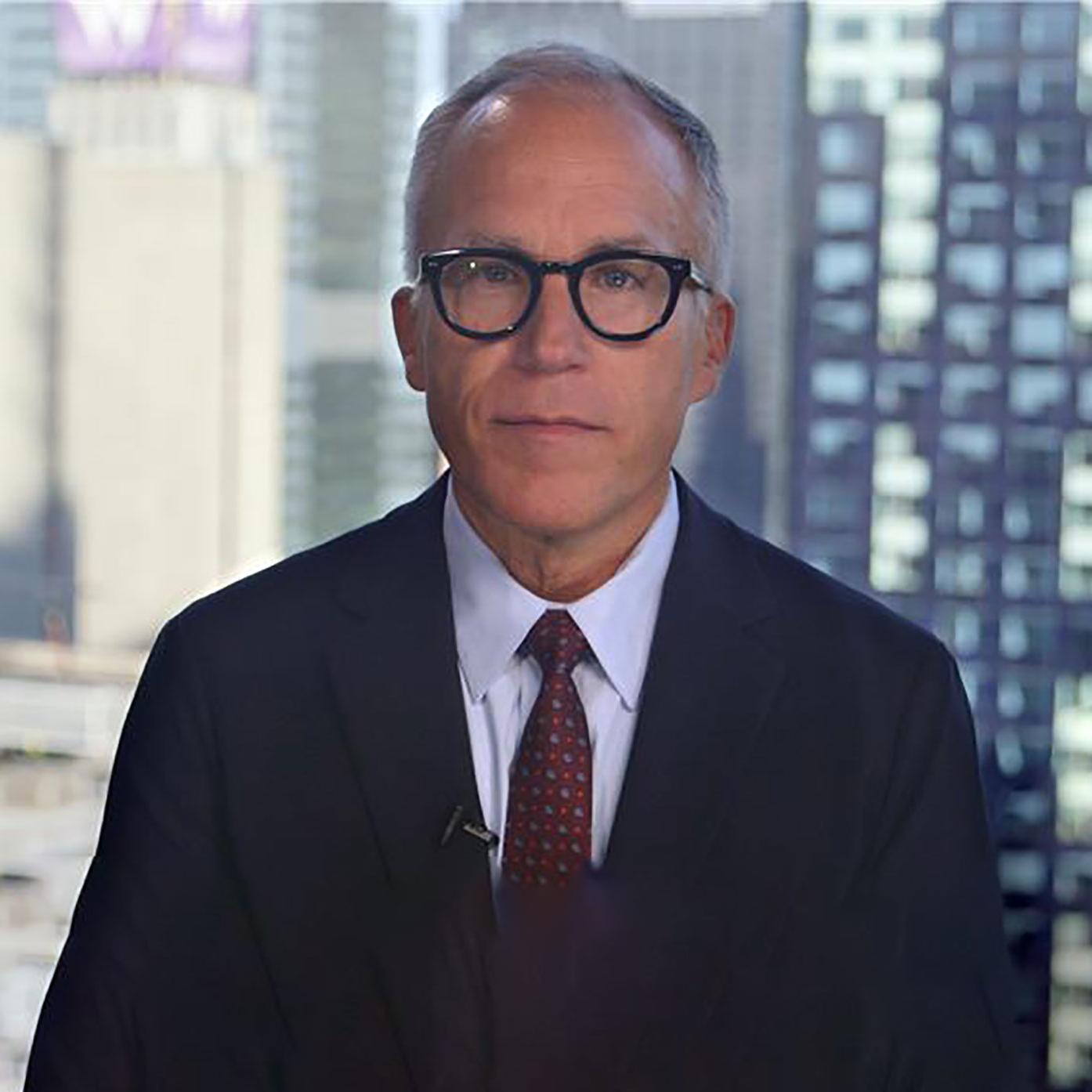
Sustainable Procurement
-
bookmark
-
print
In the latest episode of Sustainability Leaders, Angela Adduci, Senior Advisor, BMO Climate Institute, hosts a conversation with two complementary perspectives on sustainable procurement.
-
Nathan Cummins, Global Lead for Renewable Energy Markets at The Nature Conservancy, shares insights from a toolkit to help corporate buyers with clean energy procurement.
-
Sherrie O'Doyle, Director, Sustainable Procurement & Value Growth, BMO Financial Group, offers her experience working with supply-chain partners.
Listen to our ~32-minute episode.
Sustainability Leaders podcast is live on all major channels, including Apple and Spotify.
Sherrie O'Doyle:
Sustainable procurement and sustainability is not a department; it's something that every single person across the organization is responsible for and every single person that they deal with.
Michael Torrance:
Welcome to Sustainability Leaders. I'm Michael Torrance, Chief Sustainability Officer at BMO. On this show, we will talk with leading sustainability practitioners from the corporate, investor, academic, and NGO communities to explore how this rapidly evolving field of sustainability is impacting global investment, business practices, and our world.
Disclosure:
The views expressed here are those of the participants and not those of Bank of Montreal, its affiliates, or subsidiaries.
Angela Adduci:
Welcome back to another episode of Sustainability Leaders. I'm Angela Adduci, Senior Advisor to the BMO Climate Institute, and I'm so lucky today to be joined by two really fantastic guests to talk about sustainable procurement from two different perspectives; from the perspective of a specific organization working on sustainable procurement initiatives, and then from the perspective of a nonprofit looking to support firms and private sector entities in their own sustainable procurement journeys.
We have Nathan Cummins, the Global Lead for Renewable Energy Markets at the Nature Conservancy, and BMO's own Sherrie O'Doyle, who leads our sustainable procurement initiatives.
I'll start with Nathan. Could you start for our audience by giving just a little bit of an overview of the Nature Conservancy's mission and how your specific role supports this mission?
Nathan Cummins:
Yes, of course. Thanks, Angela, and to BMO for the invite here.
A little bit about TNC for folks who might not be aware. We've been around since the 1950s. Our mission is to protect the lands and waters upon which all life depends. We have operations, and we work in over 81 countries. We're the world's largest environmental nonprofit, especially focused on conservation. The topic of sustainable procurement and specifically the angle that I work on in my work, which is renewables, which is an area that many companies are procuring, and we need more procurements of, is incredibly connected to our mission because at TNC, we recognize without a livable climate, we don't have a livable planet and without a livable planet, we don't have the life and the livelihoods we all want to have.
We also recognize that climate could be everything, and so when we think about it it's important to kind of break that down. On the TNC's side, we're really working at the intersection of addressing both the climate and biodiversity crises. Both of these are happening interchangeably. At TNC, we've spent a long time and put a lot of work into protecting lands and waters, both through permanent protection mechanisms and also through private sector actions. We think about really the power of nature and other opportunities and local communities and indigenous peoples can provide in that solution.
Angela Adduci:
That's really awesome. I love how broadly the Nature Conservancy is thinking about climate and sustainability. I think it's so important to acknowledge that a lot of these things don't operate in silos. So that's really great to hear, Nathan.
So to turn to your work around sustainable procurement, the Nature Conservancy recently co-developed with Rivian, what you're calling a purpose-driven toolkit and a white paper to help organizations who are looking to accelerate renewable energy deployment while balancing with other goals that they might have around sustainability and climate, like conservation goals or community-oriented goals. I'm hoping you could walk us through how these materials came about, what their evolution was, and how you decided to pursue this collaboration.
Nathan Cummins:
Yeah, absolutely. I think to take one step back, it's important to recognize what we're all trying to do here. And when we talked about semi-nuclear climate crisis, about two-thirds of global greenhouse gas emissions come from the energy sector in some way, shape or form. So when we're showing up here, we need to be showing up holistically about how do we decrease those emissions. We think at TNC, about a third of that solution can be from what we call natural climate solutions, whether that's the trees around you, whether that's mangroves around the coast, whether that's even sea marshes, we think there's huge opportunity and potential. That being said, that's not going to get us to where we need to be. We've unfortunately boxed ourselves into position where we really do have to build our way out of this climate crisis. And so we need to accelerate renewables. We need to triple renewables by 2030 to stem off the worst effects of climate change. And right now, most major markets, including the United States, are not on pace to do that.
And so then it comes to why are we not on pace to do that? There's no one answer to it. But one of the key reasons is we need to deploy a lot of new clean energy infrastructure, and that is hard to do. I think we just need to recognize that even just building a road can be hard, but thinking about all of the complexities of managing an energy grid, bringing projects online at a pace and scale that's necessary, while adapting to new technologies, while recognizing these projects do take up land. And so thinking about how we accelerate renewables is incredibly important because we have to.
That's where the purpose-driven toolkit comes in the work with Rivian because corporate buyers, they've really been leading this in the United States. Since 2014, about 40% of all large-scale projects, and when I say projects, I say renewable energy projects, so wind and solar, not necessarily the ones on your roof, but we're talking about the big large ones that are either out in the farm fields or often away from city infrastructure just due to the size that's needed to build these out, have been supported through corporate clean energy goals and commitments. And that is incredible. And it really stabilized the market and provided a foundation for us to build and accelerate clean energy deployment through the 2020s.
Now we're at a position where we have an opportunity to figure out, well, what do we do next? I think it's an opportunity to drive for impact because at TNC, we believe the energy transition is going to happen at the pace of trust. And what we're seeing right now, and I think every organization could have a different take on the why of this, is that trust is not fully baked within communities, at least in the United States, and I think also globally. We're seeing rising county moratoria, for example, that can really restrict and limit wind and solar energy development. And that often is not necessarily due to political reasons. It's often due to what their neighbors thought of the project in the county next door to them. We have to figure this out because in the United States, we have to find a way to get these projects on the ground and do it in a way that can really benefit and uplift communities. And that's what we're really excited about.
When we started working with Rivian, the reason we did it is because we had really shared organizational priorities. One unique story in this is TNC. We're one of the largest private landowners in the United States. We have, I think, over 800 fleet utility vehicles that we need to use. And these are not often just Toyota Corollas that we're rolling around the city with; these are trucks. We do a lot of fire management and burning and partnership and burning throughout the United States. We have one of the nation's largest private bison herds. We have to find a way to corral those bison. You can't really do that in small ATVs. Big infrastructure make that happen. We also have decarbonization goals as an organization.
And so it's how do you electrify a fleet that we need to while knowing it needs to work to land? That's where Rivian came in as one of the first offerings of electric vehicles. And they were also really trying to create fit-for-purpose vehicles that could really support impact partners like ourselves. We worked together to test out four different types of vehicle configurations at four different preserves, from them helping us strap on a safari seat, to a vehicle out in California, to really show the lands that we're working on, to donors and the communities, to helping us build water tanks to go onto a truck down in Florida to help with our subscribed burning down at preserves to help bring back one leaf pine, to getting a big old snowplow on one up in Wyoming. At TNC, we'd been working in the field of renewables for a long time, since the early 2000s really studying what are the science-based impacts and opportunities from this transition and how do we de-conflict to accelerate, is kind of our whole goal here.
We partnered with Rivian on a pretty unique RFP, where Rivian was the financial and economic sponsor of the project, we were the, I would say, impact advisor to the RFP, and we looked across to see what projects are out there that meet on key criteria that we establish, which we call the three Cs, which is looking for projects that have an outsized positive impact on climate change. Both can be where the projects are cited. I.e., it's better to have a project in Wyoming which has a relatively dirty grid versus California, which has a relatively clean grid. Now that's simplifying it, but the theory is the same. In the same way, it's better to have a project like with solar that doesn't clear forested lands. Solar's always going to beat forest from a carbon perspective, but it takes about one to three years for that payback period to happen. And that carbon payback period currently is unaccounted for in any reporting metrics. So we're just trying to find a way to make the case as strong as possible on the climate side.
On the conservation side as well, as I said, these projects can take a lot of land. We've done estimates to show that if unconstrained they'll build out for the United States to meet our clean energy goals could be a land area the size of Texas, that's pretty large, but we can reduce that significantly with smart planning and policy procedures. Also, these projects can just be net positive for nature. Now that's a really loaded term, but it's important to know that there's a ton of opportunities.
One example, we just recently released a project with the clean energy producer Orsted out of Denmark. It was their largest solar project in the United States to date. It's in Texas. It pairs solar with the largest protection initiative the Nature Conservancy has done for this rare piece of tall grass prairie in Texas. So it was almost a thousand acres of tall grass prairie protected in conjunction and sharing a fence line with the solar facility. So it's a really cool opportunity to layer co-benefits.
At the end of the day, there's not going to be one perfect project. Every energy project comes with trade-offs, but looking through these resources that at least TNC and Rivian road tested looking across 200 projects over the course of a couple of years, and what we found was a lot of very cool projects that met the economic needs of the counterparties and the deal that also drove strong and tangible three C benefits.
That's what we're really excited about; this toolkit is out there. We're not suggesting it's perfect, but we found cool projects, and we know there's more of them out there.
Angela Adduci:
I love that three C framework. I think that's such a cool way to think about it.
What really stuck out to me about what you just said was clean energy deployment being driven in a large way by corporate commitments. I think you said 40% of clean energy deployment. I think that's massive. TNC is clearly taking a partner ecosystem, macro standards development approach, and I think that it'd be interesting to hear from Sherrie as an individual leading these initiatives at a specific bank, at a specific organization, and driving BMO's sustainable procurement journey. I'm hoping you could talk us through what that evolution has looked like as a specific organization looking to develop this capacity and really drive how we think about this.
Sherrie O'Doyle:
Yeah, happy to. First off, Nathan, amazing. Congratulations on the work that TNC has done. It sounds absolutely incredible, and I've been furiously taking notes on everything that you've said.
What I would say first off is with large complex organizations like BMO that are very much based on the service side of things, there's more than one area. So while I'm quite privileged to lead a small group that helps impact and influence our lines of business, our corporate real estate areas, our technology areas, they are all living and breathing it every day and being able to cascade some of that messaging and having everybody buy into the purpose of this is something that we face every day that's incredibly important.
The other piece of our work, and it's where a large part of our focus is, is the fact that we procure a lot of what we do, and it's a big impact on economies across both sides of the border. We have a supply chain, and in that supply chain are thousands of companies, a few hundred of which make up a big amount of what we spend. And so when we think about our decarbonization journey and the things that we need to do, we're not just actually even thinking about ourselves because if we look to decarbonize versus offsetting then we're actually looking to have our supply chain decarbonize with us and really look at working with businesses that are aligned with our values and are able to come to the table. That's where I get started on how BMO has approached it, which is we need to start from where people are as opposed to going in and trying to get everybody exactly to where we are right now. And that's variable right across the board.
So a lot of our work really started with do we have a baseline? Do we even know what our own purchase goods and services carbon emissions are? Do our supply chain actually know what theirs are?
I would say the first couple of years we've really been focused on education as well as really ensuring that the businesses we deal with and educating people across the enterprise on what this might look like, what does the responsibility look like, and also having to ensure that we can inspire ownership of this.
Our group has been really working on a few things. Number one, like I mentioned, building a baseline. Data is power. And if you don't know where you are, you don't know where you need to go. It has been very enlightening over the last couple of years to realize that if you don't actually know what's happening, then you actually have really zero ideas. So people can set all the climate targets in the world, but if you don't know where you're starting, you have no idea where you're going.
One of the examples that I love to point out... and first off, I had nothing to do with this. This is all the corporate real estate team. But just being able to say that we had opened our first net-zero energy branch. So when I think about something like that, there's a lot that goes into it. I think Nathan talked about finding something that's good for the community, that benefits the economy, that really considers whether or not it can be both cost-effective as well as helping the environment. And so what I think has been really key about this is that it wasn't just one piece to bring this all together. Everything that had to happen was looking at the footprint on the land, looking at where we're building, what type of installation, construction materials, solar power; is it going to offset. And then to make sure that we're actually delivering on what we said we would. What's the monitoring system to make sure that we can verify and report that these things are actually carbon-neutral, that we are actually net-zero?
It's also about supporting the supply chain. For us, it's what resources can we provide? What I love about what Nathan and the team have created is not just the fact that I think that BMO could leverage some of this, but for us working with that supply chain. Some of these are really large companies, some of them aren't. But more often than not, when we go to a company and say, "We'd like to make sure that you're aligned with us, and we would like to work with you to make sure that you've got the right climate targets in place, are they science-based, do you know what your emissions are, can you tell us what they are." When we go to them, a lot of times nobody looks at us and says, "We don't want to give you that. We don't want to do what's right." What they say is, "We're not really sure where to start. We may not have the resourcing. We may not have the capacity." We don't really know they have the expertise.
And so when we create these resources, again, these companies, the supply chain, the people that we're dealing with, they want to do something. But it's that starting point. And it's the fact that sustainability has become less of a, you need one small group of people to be subject-matter experts, and you kind of need everybody to know a little something about how to get started and where to go.
Angela Adduci:
I think that's fantastic. Thank you so much, Sherrie. I'm so glad you brought up the net-zero energy branch. I think that was something that really got a lot of people excited across the bank, and I think I agree with you that there's so much potential to scale there. I'm so happy you brought that up.
The two of you, it's clear you're coming at sort of a similar challenge or topic of responsible procurement from slightly different angles. But one thing that stands out to me across what you've both taken us through is that there's really not yet any sort of set global standard that we can point to and say, "Okay, this is how you do sustainable procurement. This is how you do responsible procurement. These are the rules, and this is the checklist." And organizations from large organizations to small organizations are still really figuring it out together, both up and down the supply chain and then with the involvement of organizations like the Nature Conservancy. That's a really interesting spot for you both to be in, right? The roadmap is sort of there, but it's still in development, and that's a really fascinating place to operate.
So I would be curious to hear from both of you. Maybe we start with Sherrie and then go to Nathan, about where you've seen successes on this journey and where there might be opportunities to collaborate more.
Sherrie O'Doyle:
Great question. Thanks Angela.
I feel like anytime that I've had the opportunity to speak about this topic or talk to people, this has come up. It's a topic that I think a lot of corporates and a lot of businesses are quite passionate about. And from my own personal perspective, building out our sustainable procurement unit, I look back, and I laugh a little bit because when we first started it was like, "Well, what should we do?" And nobody knew the answer. And it was like, "Well, you can do this method and this method, and you can try this, and you can try that." And the calculation standards aren't consistent across even North America, let alone the globe of what good looks like. There's many different agencies that tell you what good is compared to their own standard. Everybody calls themselves the gold standard. There's a lot of just complexity and conflict in the system when it comes to this stuff, and it is a fast-paced environment to work in when we think about climate and sustainability, and it's ever-changing.
What I had to learn and what I think our team had to learn to go through the process was you can paralyze yourself by not just taking a step. There is an advantage to the fact that the standards are not necessarily consistent. So you can look at it as a challenge. You can say, "Somebody please tell me what to do." Or you can look at it and say, "There's enough freedom within the frame right now where we can look at doing what's right." We look at nonprofits, of course. We look at our indigenous communities. We look at climate experts. We have a climate institute at BMO. Lots of expertise that's come from an internal source. And then we sort of say, "Okay, this is how we're doing it." Now, we may learn how to better do that tomorrow, but there's a place where we have to get started.
You mentioned the word, Angela. Collaboration is the key. And it's not just collaborate with anybody. You have to do your research, and talk to people, and see are we aligned in our values? "Are we," as Nathan talked about earlier, "looking at that balance between the community, the economic impacts and the climate?" And I think the last couple of years for us, we've just had our eyes open to so many different groups that are doing amazing things. I would say even to our own supply chain, we look at learning so much from what some of these companies are able to do. I would say in particular, you've got smaller companies that don't necessarily have some of that rigid framework that a larger complex organization does. They're able to be a little bit more innovative, a little bit faster, and we're able to look at them and go, "Wow," and then be able to figure out the things that we can do from there.
So I do think collaborating through the process is key. For us, getting involved in global networks. We're involved in a global scope three peer network. So we spend a lot of time talking to colleagues that are in Europe and that are in the US and Canada to try to actually just find common ground. That's been really, really helpful I think for us to be able to figure out not just what good looks like for Canada and the US, but what does good look like now on a global scale, because there are areas across the globe that have just made much more progress in different areas than we have. And so it is about learning from your peers, from your supply chain, from your experts in the field, from the nonprofits that make this a priority for everything that they do.
Nathan Cummins:
I think everything you stated there is totally on the spot, and it's what we worry about internally and what we try to help people with externally. And so maybe the way to unpack that more is on an internal side. We want to be positioning ourselves as solutions enablers here and showing, I would say, market-tested best available, what we have now type stuff, for the broader community. That requires, again, kind of back to what I was starting at the beginning, accepting that there will be trade-offs and just understanding if you align to your values, you can find the way to optimize your portfolio of whether it's investments, whether it's renewable energy credits, whether it's mitigation, whatever is the attribute you're seeking, you can find a way to optimize that across portfolios. And then what happens is there's a worry of even if I took two good steps and one bad step that this is not worth it, so I'm not going to do the risk associated with that.
And what we're trying to, I would say, engender, and I think this is particularly hard when you talk about energy because it is so complicated, it is so enmeshed in different basic systems of governance, of national security, of economics, of all this stuff, of trying to bring them all together in a way to say, "This is the best decision we could make right now, and that's okay." So we don't want to be framing this whole conversation around how do you not do bad? I think we're trying to frame, or at least at TNT what we're trying to frame, with partners, how do we get to good? I'll do two quick examples; one on the people side, one on the planet side.
On the people side, there are a ton of ways renewable energy projects can support communities. There's the block way of adding more revenue to the pot, like we talked about earlier. There's reparative justice opportunities. There's land sharing opportunities. There's community ownership opportunities. There's the gambit. It's not a lack of options.
One example of a group that's really been at the forefront of this for some time in the United States is a group called Solar Stewards. They're based in Atlanta, founded by Dana Clare Redden. She's really been on the forefront of realizing that these energy projects don't need to leave communities behind, but can actually uplift community opportunities. They work on a product they call a social wreck, but it's kind of the same thing as a renewable energy credit. But then you add in a justified investment into a local community and the revenue from the project is driven to bring, say, more solar on an underserved school rooftop.
On the planet side, another example with the TNC, Rivian work is when we first put out the RFP... We open sourced everything. It basically says, "Hey, we do not want to be investing in a project that clears significant natural lands of importance." There are a lot of resources you can look at. TNC is one, our site renewables right map. It's currently in 19 states. We're expanding nationwide. But there's definitely a bunch of other resources. We're not the only game in town on this.
But you can understand is this land valuable? If so, ideally we don't put additional infrastructure on it that could have specific impacts that we know. We don't want to talk about it, but we do know these renewable energy projects can have direct and indirect impacts to bird, bat, other key species we care about are just the connectivity and the ability to move.
That's the avoidance side of the conversation. That's the sort of, I would say, do no harm side. But then what we did is we said, "Hey, if you're a developer, and you bring us a project that has a really cool story from a community impact perspective, N/4 is just cited on a brownfield or a mine land, and thinking about how do you use abandoned mine lands and brownfields, these sites that are really hard to bring stuff to that have had impacts to communities both positive and negative, how do you revitalize them in a more holistic way?"
That's just one example, and we put that in the RFP, and we found projects with that. But we're looking. We've had a coalition of groups put together here in the United States. We had anchored it with the Clean Energy Buyers Association that represent about 90% of all power purchasing to really scope out if there's an opportunity. And now we do find that opportunity, and we are moving it forward. We're calling it the Renewable Energy for People and Planets Standard.
Our goal is to get a 1.0 out to help, especially at the point of when these large corporate buyers invest in these projects, to identify the good things they want to see and reward developer partners that are working with communities to make that happen. Groups like Solar Stewards, like Cintec Environmental, these groups that are doing some really cool work happening on the front lines.
Sherrie O'Doyle:
I love that, Nathan. I'm sorry, Angela. I do want to jump in on this one just for a second to say that what you're building can come full circle, because when we think about our sourcing activities in the procurement space and when we differentiate, you talk that if all else is equal, how does somebody kind of get to that next level? For us having options to look at the different standards and the different accreditation stuff that the companies have that we want to do business with, that's what we look at.
First, obviously there's a look at the cost. But when we have to look at things being created equal... and by the way, there's the cost dollars now and then there's the future cost of what it is that you're impacting and having to pay for carbon offsets and all those things... it's a whole other discussion. But when I think about how do we differentiate between providers, being able to differentiate between providers and have some of these standards in place, honestly it kind of helps make corporate jobs much easier as well because we can look at it and go, "Okay, but these guys are great, but look at what they've done." And so we can tell that they're truly invested in making a difference, and they're actually putting their money and their name behind making a true significant difference as opposed to purchasing some sort of accreditation.
Angela Adduci:
This is incredible. Thank you both for your answers on this. I think it's so inspiring to hear both of your clear-eyed attitude toward the complexities that you're working with here and the environment where this is actively developing. It's so clear to me how deep you both are on this topic and how much you truly really care about this. So really incredible to hear you both talk through where you're actively at in your own organization's journeys right now and where you see it going. I think it's just really, really cool to hear.
I know we only have a minute or two left, but is there anything else that either of you would like to add to this conversation before we wrap up?
Nathan Cummins:
I think from TNC's perspective, what we want to get out of this is an understanding that we're all aligned to accelerating this deployment. And everything we talked about that is going to show up in this podcast, I could understand someone having a bunch of different thoughts running through their head and the complexity of it, and I just want to say almost all of us are informed and have technical resource and the space in some way, shape or form, if you're listening to this. I imagine all that from a host community's perspective that are often volunteer boards in nature, that these are incredibly complicated projects, and they don't have either ability or resource to fully understand what they're signing up for.
I just want to inject a dose of realism to that side of it too. There's this worry that it's only NIMBYs or it's us versus them, and it's these battle lines being drawn that I don't think are very firm. I think it's much more just how do we share the information and align expectations.
That's what we're trying to do. And if you're a corporate out there, there are lots of groups like TNC you can work with in your state, in your region.
Sherrie O'Doyle:
And Nathan and I talked about this both a little bit, but it's progress versus perfection. It's actions versus the analysis paralysis. The best thing that we can do as corporates, as nonprofits, as just human citizens, is to make sure that we're not somebody that's doing nothing, and wherever you are on the journey, it's okay. And so when you think about what do you do next, you take things like the Nature Conservancy's Toolkit and you learn and you educate yourself. It may not be a portion of your entire job, but it is something that we can all do to just make a little bit more progress towards where we need to be. I would just encourage everybody to take a look at that because it's amazing what we can do if we just sort of put the fears aside and just go ahead and do.
Angela Adduci:
I think that's a great final note to end this conversation. This has been such a fascinating discussion and really appreciate the both of you coming on today.
Nathan Cummins:
Yeah, thanks for having us.
Sherrie O'Doyle:
Yes, thanks so much for having us.
Michael Torrance:
Thanks for listening to Sustainability Leaders. This podcast is presented by BMO. You can find our show on Apple Podcasts, Spotify, or your favorite podcast player. Press the follow button if you want to get notified when new episodes are published. We value your input, so please leave a rating, review, and any feedback that you might have, or visit us at bmo.com/sustainabilityleaders. Our show and resources are produced with support from BMO's Marketing team and Puddle Creative.
Until next time, thanks for listening, and have a great week.
Disclosure:
For BMO disclosures, please visit bmocm.com/podcast/disclaimer.

Sustainable Procurement
Senior Advisor, Policy, BMO Climate Institute
Angela leads climate policy and clean energy workstreams within BMO’s Climate Institute. Prior to joining BMO, Angela led renewables and climate policy effort…
Angela leads climate policy and clean energy workstreams within BMO’s Climate Institute. Prior to joining BMO, Angela led renewables and climate policy effort…
VIEW FULL PROFILE-
Minute Read
-
Listen
Stop
-
Text Bigger | Text Smaller
In the latest episode of Sustainability Leaders, Angela Adduci, Senior Advisor, BMO Climate Institute, hosts a conversation with two complementary perspectives on sustainable procurement.
-
Nathan Cummins, Global Lead for Renewable Energy Markets at The Nature Conservancy, shares insights from a toolkit to help corporate buyers with clean energy procurement.
-
Sherrie O'Doyle, Director, Sustainable Procurement & Value Growth, BMO Financial Group, offers her experience working with supply-chain partners.
Listen to our ~32-minute episode.
Sustainability Leaders podcast is live on all major channels, including Apple and Spotify.
Sherrie O'Doyle:
Sustainable procurement and sustainability is not a department; it's something that every single person across the organization is responsible for and every single person that they deal with.
Michael Torrance:
Welcome to Sustainability Leaders. I'm Michael Torrance, Chief Sustainability Officer at BMO. On this show, we will talk with leading sustainability practitioners from the corporate, investor, academic, and NGO communities to explore how this rapidly evolving field of sustainability is impacting global investment, business practices, and our world.
Disclosure:
The views expressed here are those of the participants and not those of Bank of Montreal, its affiliates, or subsidiaries.
Angela Adduci:
Welcome back to another episode of Sustainability Leaders. I'm Angela Adduci, Senior Advisor to the BMO Climate Institute, and I'm so lucky today to be joined by two really fantastic guests to talk about sustainable procurement from two different perspectives; from the perspective of a specific organization working on sustainable procurement initiatives, and then from the perspective of a nonprofit looking to support firms and private sector entities in their own sustainable procurement journeys.
We have Nathan Cummins, the Global Lead for Renewable Energy Markets at the Nature Conservancy, and BMO's own Sherrie O'Doyle, who leads our sustainable procurement initiatives.
I'll start with Nathan. Could you start for our audience by giving just a little bit of an overview of the Nature Conservancy's mission and how your specific role supports this mission?
Nathan Cummins:
Yes, of course. Thanks, Angela, and to BMO for the invite here.
A little bit about TNC for folks who might not be aware. We've been around since the 1950s. Our mission is to protect the lands and waters upon which all life depends. We have operations, and we work in over 81 countries. We're the world's largest environmental nonprofit, especially focused on conservation. The topic of sustainable procurement and specifically the angle that I work on in my work, which is renewables, which is an area that many companies are procuring, and we need more procurements of, is incredibly connected to our mission because at TNC, we recognize without a livable climate, we don't have a livable planet and without a livable planet, we don't have the life and the livelihoods we all want to have.
We also recognize that climate could be everything, and so when we think about it it's important to kind of break that down. On the TNC's side, we're really working at the intersection of addressing both the climate and biodiversity crises. Both of these are happening interchangeably. At TNC, we've spent a long time and put a lot of work into protecting lands and waters, both through permanent protection mechanisms and also through private sector actions. We think about really the power of nature and other opportunities and local communities and indigenous peoples can provide in that solution.
Angela Adduci:
That's really awesome. I love how broadly the Nature Conservancy is thinking about climate and sustainability. I think it's so important to acknowledge that a lot of these things don't operate in silos. So that's really great to hear, Nathan.
So to turn to your work around sustainable procurement, the Nature Conservancy recently co-developed with Rivian, what you're calling a purpose-driven toolkit and a white paper to help organizations who are looking to accelerate renewable energy deployment while balancing with other goals that they might have around sustainability and climate, like conservation goals or community-oriented goals. I'm hoping you could walk us through how these materials came about, what their evolution was, and how you decided to pursue this collaboration.
Nathan Cummins:
Yeah, absolutely. I think to take one step back, it's important to recognize what we're all trying to do here. And when we talked about semi-nuclear climate crisis, about two-thirds of global greenhouse gas emissions come from the energy sector in some way, shape or form. So when we're showing up here, we need to be showing up holistically about how do we decrease those emissions. We think at TNC, about a third of that solution can be from what we call natural climate solutions, whether that's the trees around you, whether that's mangroves around the coast, whether that's even sea marshes, we think there's huge opportunity and potential. That being said, that's not going to get us to where we need to be. We've unfortunately boxed ourselves into position where we really do have to build our way out of this climate crisis. And so we need to accelerate renewables. We need to triple renewables by 2030 to stem off the worst effects of climate change. And right now, most major markets, including the United States, are not on pace to do that.
And so then it comes to why are we not on pace to do that? There's no one answer to it. But one of the key reasons is we need to deploy a lot of new clean energy infrastructure, and that is hard to do. I think we just need to recognize that even just building a road can be hard, but thinking about all of the complexities of managing an energy grid, bringing projects online at a pace and scale that's necessary, while adapting to new technologies, while recognizing these projects do take up land. And so thinking about how we accelerate renewables is incredibly important because we have to.
That's where the purpose-driven toolkit comes in the work with Rivian because corporate buyers, they've really been leading this in the United States. Since 2014, about 40% of all large-scale projects, and when I say projects, I say renewable energy projects, so wind and solar, not necessarily the ones on your roof, but we're talking about the big large ones that are either out in the farm fields or often away from city infrastructure just due to the size that's needed to build these out, have been supported through corporate clean energy goals and commitments. And that is incredible. And it really stabilized the market and provided a foundation for us to build and accelerate clean energy deployment through the 2020s.
Now we're at a position where we have an opportunity to figure out, well, what do we do next? I think it's an opportunity to drive for impact because at TNC, we believe the energy transition is going to happen at the pace of trust. And what we're seeing right now, and I think every organization could have a different take on the why of this, is that trust is not fully baked within communities, at least in the United States, and I think also globally. We're seeing rising county moratoria, for example, that can really restrict and limit wind and solar energy development. And that often is not necessarily due to political reasons. It's often due to what their neighbors thought of the project in the county next door to them. We have to figure this out because in the United States, we have to find a way to get these projects on the ground and do it in a way that can really benefit and uplift communities. And that's what we're really excited about.
When we started working with Rivian, the reason we did it is because we had really shared organizational priorities. One unique story in this is TNC. We're one of the largest private landowners in the United States. We have, I think, over 800 fleet utility vehicles that we need to use. And these are not often just Toyota Corollas that we're rolling around the city with; these are trucks. We do a lot of fire management and burning and partnership and burning throughout the United States. We have one of the nation's largest private bison herds. We have to find a way to corral those bison. You can't really do that in small ATVs. Big infrastructure make that happen. We also have decarbonization goals as an organization.
And so it's how do you electrify a fleet that we need to while knowing it needs to work to land? That's where Rivian came in as one of the first offerings of electric vehicles. And they were also really trying to create fit-for-purpose vehicles that could really support impact partners like ourselves. We worked together to test out four different types of vehicle configurations at four different preserves, from them helping us strap on a safari seat, to a vehicle out in California, to really show the lands that we're working on, to donors and the communities, to helping us build water tanks to go onto a truck down in Florida to help with our subscribed burning down at preserves to help bring back one leaf pine, to getting a big old snowplow on one up in Wyoming. At TNC, we'd been working in the field of renewables for a long time, since the early 2000s really studying what are the science-based impacts and opportunities from this transition and how do we de-conflict to accelerate, is kind of our whole goal here.
We partnered with Rivian on a pretty unique RFP, where Rivian was the financial and economic sponsor of the project, we were the, I would say, impact advisor to the RFP, and we looked across to see what projects are out there that meet on key criteria that we establish, which we call the three Cs, which is looking for projects that have an outsized positive impact on climate change. Both can be where the projects are cited. I.e., it's better to have a project in Wyoming which has a relatively dirty grid versus California, which has a relatively clean grid. Now that's simplifying it, but the theory is the same. In the same way, it's better to have a project like with solar that doesn't clear forested lands. Solar's always going to beat forest from a carbon perspective, but it takes about one to three years for that payback period to happen. And that carbon payback period currently is unaccounted for in any reporting metrics. So we're just trying to find a way to make the case as strong as possible on the climate side.
On the conservation side as well, as I said, these projects can take a lot of land. We've done estimates to show that if unconstrained they'll build out for the United States to meet our clean energy goals could be a land area the size of Texas, that's pretty large, but we can reduce that significantly with smart planning and policy procedures. Also, these projects can just be net positive for nature. Now that's a really loaded term, but it's important to know that there's a ton of opportunities.
One example, we just recently released a project with the clean energy producer Orsted out of Denmark. It was their largest solar project in the United States to date. It's in Texas. It pairs solar with the largest protection initiative the Nature Conservancy has done for this rare piece of tall grass prairie in Texas. So it was almost a thousand acres of tall grass prairie protected in conjunction and sharing a fence line with the solar facility. So it's a really cool opportunity to layer co-benefits.
At the end of the day, there's not going to be one perfect project. Every energy project comes with trade-offs, but looking through these resources that at least TNC and Rivian road tested looking across 200 projects over the course of a couple of years, and what we found was a lot of very cool projects that met the economic needs of the counterparties and the deal that also drove strong and tangible three C benefits.
That's what we're really excited about; this toolkit is out there. We're not suggesting it's perfect, but we found cool projects, and we know there's more of them out there.
Angela Adduci:
I love that three C framework. I think that's such a cool way to think about it.
What really stuck out to me about what you just said was clean energy deployment being driven in a large way by corporate commitments. I think you said 40% of clean energy deployment. I think that's massive. TNC is clearly taking a partner ecosystem, macro standards development approach, and I think that it'd be interesting to hear from Sherrie as an individual leading these initiatives at a specific bank, at a specific organization, and driving BMO's sustainable procurement journey. I'm hoping you could talk us through what that evolution has looked like as a specific organization looking to develop this capacity and really drive how we think about this.
Sherrie O'Doyle:
Yeah, happy to. First off, Nathan, amazing. Congratulations on the work that TNC has done. It sounds absolutely incredible, and I've been furiously taking notes on everything that you've said.
What I would say first off is with large complex organizations like BMO that are very much based on the service side of things, there's more than one area. So while I'm quite privileged to lead a small group that helps impact and influence our lines of business, our corporate real estate areas, our technology areas, they are all living and breathing it every day and being able to cascade some of that messaging and having everybody buy into the purpose of this is something that we face every day that's incredibly important.
The other piece of our work, and it's where a large part of our focus is, is the fact that we procure a lot of what we do, and it's a big impact on economies across both sides of the border. We have a supply chain, and in that supply chain are thousands of companies, a few hundred of which make up a big amount of what we spend. And so when we think about our decarbonization journey and the things that we need to do, we're not just actually even thinking about ourselves because if we look to decarbonize versus offsetting then we're actually looking to have our supply chain decarbonize with us and really look at working with businesses that are aligned with our values and are able to come to the table. That's where I get started on how BMO has approached it, which is we need to start from where people are as opposed to going in and trying to get everybody exactly to where we are right now. And that's variable right across the board.
So a lot of our work really started with do we have a baseline? Do we even know what our own purchase goods and services carbon emissions are? Do our supply chain actually know what theirs are?
I would say the first couple of years we've really been focused on education as well as really ensuring that the businesses we deal with and educating people across the enterprise on what this might look like, what does the responsibility look like, and also having to ensure that we can inspire ownership of this.
Our group has been really working on a few things. Number one, like I mentioned, building a baseline. Data is power. And if you don't know where you are, you don't know where you need to go. It has been very enlightening over the last couple of years to realize that if you don't actually know what's happening, then you actually have really zero ideas. So people can set all the climate targets in the world, but if you don't know where you're starting, you have no idea where you're going.
One of the examples that I love to point out... and first off, I had nothing to do with this. This is all the corporate real estate team. But just being able to say that we had opened our first net-zero energy branch. So when I think about something like that, there's a lot that goes into it. I think Nathan talked about finding something that's good for the community, that benefits the economy, that really considers whether or not it can be both cost-effective as well as helping the environment. And so what I think has been really key about this is that it wasn't just one piece to bring this all together. Everything that had to happen was looking at the footprint on the land, looking at where we're building, what type of installation, construction materials, solar power; is it going to offset. And then to make sure that we're actually delivering on what we said we would. What's the monitoring system to make sure that we can verify and report that these things are actually carbon-neutral, that we are actually net-zero?
It's also about supporting the supply chain. For us, it's what resources can we provide? What I love about what Nathan and the team have created is not just the fact that I think that BMO could leverage some of this, but for us working with that supply chain. Some of these are really large companies, some of them aren't. But more often than not, when we go to a company and say, "We'd like to make sure that you're aligned with us, and we would like to work with you to make sure that you've got the right climate targets in place, are they science-based, do you know what your emissions are, can you tell us what they are." When we go to them, a lot of times nobody looks at us and says, "We don't want to give you that. We don't want to do what's right." What they say is, "We're not really sure where to start. We may not have the resourcing. We may not have the capacity." We don't really know they have the expertise.
And so when we create these resources, again, these companies, the supply chain, the people that we're dealing with, they want to do something. But it's that starting point. And it's the fact that sustainability has become less of a, you need one small group of people to be subject-matter experts, and you kind of need everybody to know a little something about how to get started and where to go.
Angela Adduci:
I think that's fantastic. Thank you so much, Sherrie. I'm so glad you brought up the net-zero energy branch. I think that was something that really got a lot of people excited across the bank, and I think I agree with you that there's so much potential to scale there. I'm so happy you brought that up.
The two of you, it's clear you're coming at sort of a similar challenge or topic of responsible procurement from slightly different angles. But one thing that stands out to me across what you've both taken us through is that there's really not yet any sort of set global standard that we can point to and say, "Okay, this is how you do sustainable procurement. This is how you do responsible procurement. These are the rules, and this is the checklist." And organizations from large organizations to small organizations are still really figuring it out together, both up and down the supply chain and then with the involvement of organizations like the Nature Conservancy. That's a really interesting spot for you both to be in, right? The roadmap is sort of there, but it's still in development, and that's a really fascinating place to operate.
So I would be curious to hear from both of you. Maybe we start with Sherrie and then go to Nathan, about where you've seen successes on this journey and where there might be opportunities to collaborate more.
Sherrie O'Doyle:
Great question. Thanks Angela.
I feel like anytime that I've had the opportunity to speak about this topic or talk to people, this has come up. It's a topic that I think a lot of corporates and a lot of businesses are quite passionate about. And from my own personal perspective, building out our sustainable procurement unit, I look back, and I laugh a little bit because when we first started it was like, "Well, what should we do?" And nobody knew the answer. And it was like, "Well, you can do this method and this method, and you can try this, and you can try that." And the calculation standards aren't consistent across even North America, let alone the globe of what good looks like. There's many different agencies that tell you what good is compared to their own standard. Everybody calls themselves the gold standard. There's a lot of just complexity and conflict in the system when it comes to this stuff, and it is a fast-paced environment to work in when we think about climate and sustainability, and it's ever-changing.
What I had to learn and what I think our team had to learn to go through the process was you can paralyze yourself by not just taking a step. There is an advantage to the fact that the standards are not necessarily consistent. So you can look at it as a challenge. You can say, "Somebody please tell me what to do." Or you can look at it and say, "There's enough freedom within the frame right now where we can look at doing what's right." We look at nonprofits, of course. We look at our indigenous communities. We look at climate experts. We have a climate institute at BMO. Lots of expertise that's come from an internal source. And then we sort of say, "Okay, this is how we're doing it." Now, we may learn how to better do that tomorrow, but there's a place where we have to get started.
You mentioned the word, Angela. Collaboration is the key. And it's not just collaborate with anybody. You have to do your research, and talk to people, and see are we aligned in our values? "Are we," as Nathan talked about earlier, "looking at that balance between the community, the economic impacts and the climate?" And I think the last couple of years for us, we've just had our eyes open to so many different groups that are doing amazing things. I would say even to our own supply chain, we look at learning so much from what some of these companies are able to do. I would say in particular, you've got smaller companies that don't necessarily have some of that rigid framework that a larger complex organization does. They're able to be a little bit more innovative, a little bit faster, and we're able to look at them and go, "Wow," and then be able to figure out the things that we can do from there.
So I do think collaborating through the process is key. For us, getting involved in global networks. We're involved in a global scope three peer network. So we spend a lot of time talking to colleagues that are in Europe and that are in the US and Canada to try to actually just find common ground. That's been really, really helpful I think for us to be able to figure out not just what good looks like for Canada and the US, but what does good look like now on a global scale, because there are areas across the globe that have just made much more progress in different areas than we have. And so it is about learning from your peers, from your supply chain, from your experts in the field, from the nonprofits that make this a priority for everything that they do.
Nathan Cummins:
I think everything you stated there is totally on the spot, and it's what we worry about internally and what we try to help people with externally. And so maybe the way to unpack that more is on an internal side. We want to be positioning ourselves as solutions enablers here and showing, I would say, market-tested best available, what we have now type stuff, for the broader community. That requires, again, kind of back to what I was starting at the beginning, accepting that there will be trade-offs and just understanding if you align to your values, you can find the way to optimize your portfolio of whether it's investments, whether it's renewable energy credits, whether it's mitigation, whatever is the attribute you're seeking, you can find a way to optimize that across portfolios. And then what happens is there's a worry of even if I took two good steps and one bad step that this is not worth it, so I'm not going to do the risk associated with that.
And what we're trying to, I would say, engender, and I think this is particularly hard when you talk about energy because it is so complicated, it is so enmeshed in different basic systems of governance, of national security, of economics, of all this stuff, of trying to bring them all together in a way to say, "This is the best decision we could make right now, and that's okay." So we don't want to be framing this whole conversation around how do you not do bad? I think we're trying to frame, or at least at TNT what we're trying to frame, with partners, how do we get to good? I'll do two quick examples; one on the people side, one on the planet side.
On the people side, there are a ton of ways renewable energy projects can support communities. There's the block way of adding more revenue to the pot, like we talked about earlier. There's reparative justice opportunities. There's land sharing opportunities. There's community ownership opportunities. There's the gambit. It's not a lack of options.
One example of a group that's really been at the forefront of this for some time in the United States is a group called Solar Stewards. They're based in Atlanta, founded by Dana Clare Redden. She's really been on the forefront of realizing that these energy projects don't need to leave communities behind, but can actually uplift community opportunities. They work on a product they call a social wreck, but it's kind of the same thing as a renewable energy credit. But then you add in a justified investment into a local community and the revenue from the project is driven to bring, say, more solar on an underserved school rooftop.
On the planet side, another example with the TNC, Rivian work is when we first put out the RFP... We open sourced everything. It basically says, "Hey, we do not want to be investing in a project that clears significant natural lands of importance." There are a lot of resources you can look at. TNC is one, our site renewables right map. It's currently in 19 states. We're expanding nationwide. But there's definitely a bunch of other resources. We're not the only game in town on this.
But you can understand is this land valuable? If so, ideally we don't put additional infrastructure on it that could have specific impacts that we know. We don't want to talk about it, but we do know these renewable energy projects can have direct and indirect impacts to bird, bat, other key species we care about are just the connectivity and the ability to move.
That's the avoidance side of the conversation. That's the sort of, I would say, do no harm side. But then what we did is we said, "Hey, if you're a developer, and you bring us a project that has a really cool story from a community impact perspective, N/4 is just cited on a brownfield or a mine land, and thinking about how do you use abandoned mine lands and brownfields, these sites that are really hard to bring stuff to that have had impacts to communities both positive and negative, how do you revitalize them in a more holistic way?"
That's just one example, and we put that in the RFP, and we found projects with that. But we're looking. We've had a coalition of groups put together here in the United States. We had anchored it with the Clean Energy Buyers Association that represent about 90% of all power purchasing to really scope out if there's an opportunity. And now we do find that opportunity, and we are moving it forward. We're calling it the Renewable Energy for People and Planets Standard.
Our goal is to get a 1.0 out to help, especially at the point of when these large corporate buyers invest in these projects, to identify the good things they want to see and reward developer partners that are working with communities to make that happen. Groups like Solar Stewards, like Cintec Environmental, these groups that are doing some really cool work happening on the front lines.
Sherrie O'Doyle:
I love that, Nathan. I'm sorry, Angela. I do want to jump in on this one just for a second to say that what you're building can come full circle, because when we think about our sourcing activities in the procurement space and when we differentiate, you talk that if all else is equal, how does somebody kind of get to that next level? For us having options to look at the different standards and the different accreditation stuff that the companies have that we want to do business with, that's what we look at.
First, obviously there's a look at the cost. But when we have to look at things being created equal... and by the way, there's the cost dollars now and then there's the future cost of what it is that you're impacting and having to pay for carbon offsets and all those things... it's a whole other discussion. But when I think about how do we differentiate between providers, being able to differentiate between providers and have some of these standards in place, honestly it kind of helps make corporate jobs much easier as well because we can look at it and go, "Okay, but these guys are great, but look at what they've done." And so we can tell that they're truly invested in making a difference, and they're actually putting their money and their name behind making a true significant difference as opposed to purchasing some sort of accreditation.
Angela Adduci:
This is incredible. Thank you both for your answers on this. I think it's so inspiring to hear both of your clear-eyed attitude toward the complexities that you're working with here and the environment where this is actively developing. It's so clear to me how deep you both are on this topic and how much you truly really care about this. So really incredible to hear you both talk through where you're actively at in your own organization's journeys right now and where you see it going. I think it's just really, really cool to hear.
I know we only have a minute or two left, but is there anything else that either of you would like to add to this conversation before we wrap up?
Nathan Cummins:
I think from TNC's perspective, what we want to get out of this is an understanding that we're all aligned to accelerating this deployment. And everything we talked about that is going to show up in this podcast, I could understand someone having a bunch of different thoughts running through their head and the complexity of it, and I just want to say almost all of us are informed and have technical resource and the space in some way, shape or form, if you're listening to this. I imagine all that from a host community's perspective that are often volunteer boards in nature, that these are incredibly complicated projects, and they don't have either ability or resource to fully understand what they're signing up for.
I just want to inject a dose of realism to that side of it too. There's this worry that it's only NIMBYs or it's us versus them, and it's these battle lines being drawn that I don't think are very firm. I think it's much more just how do we share the information and align expectations.
That's what we're trying to do. And if you're a corporate out there, there are lots of groups like TNC you can work with in your state, in your region.
Sherrie O'Doyle:
And Nathan and I talked about this both a little bit, but it's progress versus perfection. It's actions versus the analysis paralysis. The best thing that we can do as corporates, as nonprofits, as just human citizens, is to make sure that we're not somebody that's doing nothing, and wherever you are on the journey, it's okay. And so when you think about what do you do next, you take things like the Nature Conservancy's Toolkit and you learn and you educate yourself. It may not be a portion of your entire job, but it is something that we can all do to just make a little bit more progress towards where we need to be. I would just encourage everybody to take a look at that because it's amazing what we can do if we just sort of put the fears aside and just go ahead and do.
Angela Adduci:
I think that's a great final note to end this conversation. This has been such a fascinating discussion and really appreciate the both of you coming on today.
Nathan Cummins:
Yeah, thanks for having us.
Sherrie O'Doyle:
Yes, thanks so much for having us.
Michael Torrance:
Thanks for listening to Sustainability Leaders. This podcast is presented by BMO. You can find our show on Apple Podcasts, Spotify, or your favorite podcast player. Press the follow button if you want to get notified when new episodes are published. We value your input, so please leave a rating, review, and any feedback that you might have, or visit us at bmo.com/sustainabilityleaders. Our show and resources are produced with support from BMO's Marketing team and Puddle Creative.
Until next time, thanks for listening, and have a great week.
Disclosure:
For BMO disclosures, please visit bmocm.com/podcast/disclaimer.
You might also be interested in

Validating Breakthrough Energy Concepts, a Discussion with George Hathaway

How Developers and Builders Are Paving the Way for a Greener Future

From Farm to Future: How Funding Solutions are Shaping Agricultural Emissions
Why Sustainability Is Good Business: Key Takeaways from IEFA Toronto 2024

Building for Tomorrow: Real Estate, Construction, and Sustainability
Women Entrepreneurs are Advancing Sustainability: Reflecting on the Results of the WE Empower UN SDG Challenge

Canadian Zero-Carbon Multi-Unit Residential Buildings: An Analysis of the Cost and Asset Value

BMO Equity Research on the AI + Data Center Build Out: Sustainability Impacts, Second Order Beneficiaries

Making Renewable Energy Technology Accessible to Underserved Communities: GRID Alternatives in Conversation

Women are Leading Across the Landscape of Climate and Sustainability

The Role of Responsible Mining in the Clean Energy Transition: ICMM CEO Rohitesh Dhawan in Conversation

Extreme Temperatures: How North American Cities Amplify Climate Change

Transforming the Textile Industry: Apparel Impact Institute in Conversation

Protecting Outdoor Spaces: The Conservation Alliance in Conversation

Building Meaningful Connections with Nature: Parks California in Conversation

Free, Prior and Informed Consent (FPIC): Mark Podlasly in Conversation

Quick Listen: Michael Torrance on Empowering Your Organization to Operationalize Sustainability

Quick Listen: Darryl White on the Importance of US-Canada Partnership

North America’s Critical Minerals Advantage: Deep Dive on Community Engagement

Evolving Mining for a Sustainable Energy Transition: ICMM CEO Rohitesh Dhawan in Conversation

Public Policy and the Energy Transition: Howard Learner in Conversation

Quick Listen: Darryl White on the Economic Implications of a Rapidly-Aging Society

Taskforce on Nature-Related Financial Disclosure (TNFD) – A Plan for Integrating Nature into Business

ESG Trends in the Base Metal and Diversified Mining Industries: BMO Equity Research Report

COP27 in Focus: Will Energy Security and Economic Uncertainty Impact the Climate Transition?

RoadMap Project: An Indigenous-led Paradigm Shift for Economic Reconciliation

On-Farm Carbon and Emissions Management: Opportunities and Challenges

Sustainability Strategy and Reporting for Small and Medium Sized Companies: A Discussion at the Conference of Montreal

Investment Opportunities for a Net-Zero Economy: A Conversation at the Milken Institute Global Conference

How Hope, Grit, and a Hospital Network Saved Maverix Private Capital Founder John Ruffolo

Hydrogen’s Role in the Energy Transition: Matt Fairley in Conversation

Key Takeaways on Ag, Food, Fertilizer & ESG from BMO’s Farm to Market Conference

Building an ESG Business Case in the Food Sector: The Food Institute

Retrofitting Canada's Building Sector: Efficiency Canada’s Corey Diamond in Conversation

The Role of Hydrogen in the Energy Transition: FuelCell Energy CEO Jason Few in Conversation

Tackling Climate Change in Metals and Mining: ICMM CEO Rohitesh Dhawan in Conversation

The Post 2020 Biodiversity Framework – A Discussion with Basile Van Havre

The Risk of Permafrost Thaw on People, Infrastructure & Our Future Climate

Biggest Trends in Food and Ag, From ESG to Inflation to the Supply Chain

Understanding Biodiversity Management: Best Practices and Innovation

Episode 31: Valuing Natural Capital – A Discussion with Pavan Sukhdev

Episode 29: What 20 Years of ESG Engagement Can Teach Us About the Future

Episode 28: Bloomberg: Enhancing ESG Disclosure through Data-Driven Solutions

Episode 23: TC Transcontinental – A Market Leader in Sustainable Packaging

Episode 07: World Bank: Mobilizing Capital Markets for Sustainable Finance

Episode 06: Responsible Investing – Industry Trends and Best Practices from Canada












